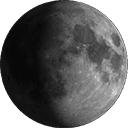The brown dwarf population in the Chamaeleon I cloud
Author(s): López Martí, B; Eisloffel, J; Scholz, A; et al.
Source: ASTRONOMY & ASTROPHYSICS Volume: 416 Issue: 2 Pages: 555-576 DOI: 10.1051/0004-6361:20031720 Published: MAR 2004
We present the results of a multiband survey for brown dwarfs in the Chamaeleon I dark cloud with the Wide Field Imager (WFI) camera at the ESO/MPG 2.2-m telescope on La Silla (Chile). The survey has revealed a substantial population of brown dwarfs in this southern star-forming region. Candidates were selected from R, I and Halpha imaging observations. We also observed in two medium-band filters, M 855 and M 915, for spectral type determination. The former filter covers a wavelength range containing spectral features characteristic of M-dwarfs, while the latter lies in a relatively featureless wavelength region for these late-type objects. A correlation was found between spectral type and (M 855-M 915) colour index for mid- to late M-type objects and early L-type dwarfs. With this method, we identify most of our object candidates as being of spectral type M 5 or later. Our results show that there is no strong drop in the number of objects for the latest spectral types, hence brown dwarfs may be as abundant as low-mass stars in this region. Also, both kind of objects have a similar spatial distribution. We derive an index alpha = 0.6 +/- 0.1 of the mass function in this region of dispersed star formation, in good agreement with the values obtained in other star forming regions and young clusters. Some of the brown dwarfs have strong Ha emission, suggesting mass accretion. For objects with published infrared photometry, we find that strong Ha emission is related to a mid-infrared excess, indicative of the existence of a circumstellar disk.






